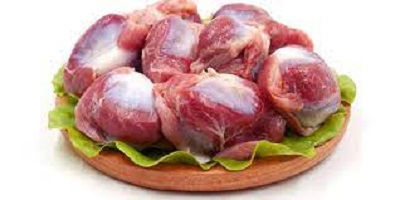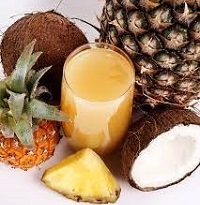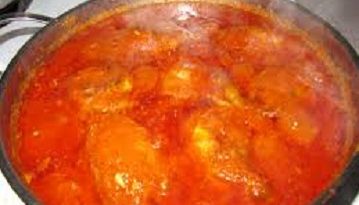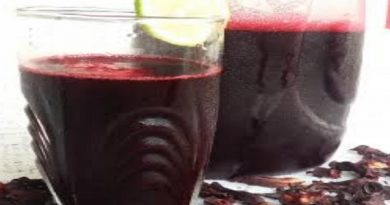Gizzard: How to Make Nigerian Peppered Gizzard
Gizzard: How to Make Nigerian Peppered Gizzard

You probably picture juicy chicken breasts, thighs, wings, or legs when you think of delicious chicken, but what about the gizzard? “What is a gizzard?” and “Is it even edible?” you’re probably asking.
The gizzard pronounced in English and Sounds like gi·zuhd is a muscle found in the stomach of birds that aids in the digestion of food particles. It is definitely edible and delicious!
What Are Gizzards? Definition and Meaning
You’ll find the word gizzard mentioned on health and nutrition blogs if you search for “chicken intestine benefits” or “organ meat benefits” online.
This term refers to a small muscle that aids in the digestion of seeds and other foods by birds. It’s a part of the bird’s stomach that aids in food digestion.
A gizzard is found in all birds, including ducks, lambs, chickens, and turkeys.
In South Africa, Southeast Asia, Eastern Europe, and other parts of the world, poultry and turkey gizzards are a delicacy.
They’re used in a variety of dishes, from soups and stews to homemade snacks, along with chicken liver, hearts, and kidneys.
They can be fried, steamed, sautéed, grilled, baked, skewered, or added to gravies and sauces.
Gizzard Function
The gizzard has a thick muscular wall and may contain small stones, or gastroliths, that function in the mechanical breakdown of seeds and other foods.
The Human Gizzard
The gizzard, or muscular stomach, is the second part of a bird’s stomach (which humans do not have).
In some species, such as ducks, gallinaceous birds (those related to chickens such as grouse, quail, and turkeys), emus, and doves, the gizzard is very thick and muscular.
An Overview of the Gizzard ~ Gizzard Biology
The gizzard, also known as the ventriculus, gastric mill, and gigerium, is a digestive organ found in archosaurs (pterosaurs, crocodiles, alligators, dinosaurs, and birds), earthworms, some gastropods, fish, and crustaceans.
This specialized stomach with thick muscular walls is used to grind food, which is often aided by stone or grit particles.
The gizzard of some insects and mollusks has chitinous plates or teeth.
Gizzards are high in protein and contain less than one gram of fat per serving, making them an excellent choice for dieters.
Have you ever tried sour cream-braised chicken gizzards, curry chicken gizzards, or pickled gizzards?
If you don’t, you’re missing out on important nutrients that promote health and happiness.
The gizzard is a small muscular organ found in the digestive tract of some birds and fish. It is also known as the gigerium or ventriculus.
Chicken and turkey gizzards, like other organ meats, are high in protein and delicious when prepared properly.
Nutritional Value of Gizzard
Gizzards are among the healthiest and most nutritious organ meats, which may come as a surprise.
They’re high in protein and low in fat, making them perfect for dieters. However, how you cook them affects their nutritional value.
- 94 calories per 3.5-ounce serving of chicken gizzards
- 7 grams of protein
- 1 gram of fat
- 18% of the daily value of zinc
- 14% of the daily value of iron
- 36% of the daily value of selenium
- 15% of the daily value of phosphorus
- 7% of the daily value of potassium
- 20% of the daily value of vitamin B12
- 18% of the daily value for niacin
Vitamin C, riboflavin, magnesium, copper, and manganese are all abundant in gizzards. They’re also carb-free and have less than 100 calories per serving.
Cooked gizzards have 154 calories, 30 grams of protein, 2.7 grams of fat, and higher levels of selenium, zinc, iron, and calcium.
The calories will add up if you cook them in oil or butter.
Chicken liver, on the other hand, has a slightly higher fat content but contains more nutrients. 167 calories, 6.5 grams of fat, and 24.5 grams of protein are found in a 3.5-ounce cooked serving.
It contains 267 percent of the daily recommended vitamin A intake, nearly half of the daily recommended vitamin C intake, and significant amounts of selenium, copper, and iron.
It also contains 281 percent of the daily recommended vitamin B12 intake.
Are Gizzards Actually Beneficial? Health Benefits of Gizzards
Gizzard benefits are high in protein and minerals and can be a nutritious addition to most diets.
According to a 2016 meta-analysis published in Scientific Reports, selenium may protect against breast, bladder, lung, prostate, and skin cancer.
This mineral promotes thyroid hormone production, protects against oxidative stress, and promotes reproductive health.
Look no further if you’re trying to lose weight. Gizzards help you burn more calories throughout the day because of their high protein content.
The results of five studies published in the Journal of the Academy of Nutrition and Dietetics in 2016 showed that high-protein diets increase fullness.
This nutrient may also assist in the prevention of obesity and the reduction of visceral fat.
Vitamin B12, which is found in gizzards, is important for brain function and the production of red blood cells.
Vitamin B12 deficiency is more common in vegans, seniors, and people with anemia or gastrointestinal disorders, according to the National Institutes of Health.
It can lead to memory problems, dementia, depression, and fatigue if left untreated.
This nutrient is especially abundant in organ meats.
Build Mass and Get Leaner
Chicken and turkey breast, lean beef, dairy, and eggs are commonly associated with protein. Organ meats are frequently forgotten.
Cooked gizzards provide 61 percent of the daily recommended protein intake, making it easier to maintain a healthy weight.
Increased protein intake can help athletes achieve better satiety and reduce muscle loss, according to a 2018 review published in the journal Nutrients.
Naturally, Boost Your Energy
Iron deficiency could be the cause of your tiredness and exhaustion.
This mineral promotes cellular health, strengthens the immune system, and aids in the delivery of oxygen to your muscles.
Anemia, which causes weakness and fatigue, brittle nails, headaches, arrhythmia, poor mental focus, chest pain, and irregular heartbeat, among other symptoms, can be caused by a low-iron diet.
Gizzards provide 18% of the daily recommended iron intake in one serving, making it easier to get this mineral into your diet.
It’s also high in zinc, magnesium, B-complex vitamins, and other nutrients that keep your body running smoothly.
Anemia and fatigue can be caused by low vitamin B12 levels, for example.
To avoid nutrient deficiencies and regain energy, eat organ meats more frequently.
Other advantages include:
- High protein content,
- High vitamin content,
- Low-fat content,
- Immunity booster.
- Proteins are broken down and converted into amino acids, which are essential for muscle growth.
- Increases your body’s iron, zinc, phosphorus, and red blood cell levels.
- Improved blood circulation and bone function.
Are There Any Potential Risks? Side Effects
There have been few studies on gizzards in particular.
Some organ meats are high in saturated fat, according to Medical News Today. If your cholesterol levels are high, limit your intake of these foods.
Gizzards, on the other hand, contain less than one gram of saturated fat per serving, making them unlikely to raise blood cholesterol or harm cardiovascular health.
Organ meats, according to the researchers, contain purines and should be avoided by gout sufferers.
Gout attacks can be triggered by these organic compounds, which raise uric acid levels.
Consider switching to organic brands if you think you’re eating too much chicken, including gizzards.
Antibiotics are frequently used by farmers to keep chickens healthy. According to
The Guardian, a diet high in poultry may promote the development of drug-resistant bacteria, which kill over 700,000 people worldwide each year.
Going organic is the only way to avoid these dangers.
Peppered Gizzard Recipe
The peppered gizzard is a mouthwatering, lip-smacking delicacy that makes a great snack. If you’ve never tried it before, you’ll be a believer after this!
Boiling, frying, grilling, stewing, or skewering gizzards are all options.
They have a tough texture when raw, but when cooked, they become quite tender.
It’s all about the seasoning when it comes to gizzards.
I occasionally eat it boiled, especially when I’m impatient and can’t wait to finish the rest of the meal.
This becomes a very tasty dish when fried or grilled and well-seasoned!
This recipe uses bell peppers and habanero peppers and are quite spicy, so spicy food fans will love it!
I have some modifications for you if you can’t handle a lot of heat but still want to enjoy this recipe.
Gizzards also have the advantage of being relatively inexpensive. Depending on where you live, a pound of gizzards could cost a little more than a dollar.
Used ingredients
Only a few ingredients are needed to make this peppered gizzard recipe.
- Gizzards: For this recipe, I used chicken gizzards, but you could also use turkey gizzards. Gizzards are available in some supermarkets, usually in the raw/fresh meat section.
- You can also get it from a butcher, but you’ll have to clean it yourself, which takes some skill and knowledge to do correctly.
- Red bell pepper, habanero pepper, and onions as vegetables I also garnish with scallions, but this is optional.
- Olive oil for frying the gizzard and preparing the sauce
- Bouillon powder, black pepper, thyme, cayenne pepper, and salt are among the spices used.
Making peppered gizzards
Place gizzards in a pot after washing them under running water. It doesn’t take much water to boil it; just make sure it covers the gizzard.
- Season with salt and pepper, cover, and bring to a rolling boil.
- Because I don’t mind it being slightly tough and chewy, I only boil it for 15 minutes.
- If you want it to be a tenderer, cook it for a few minutes longer until it reaches your desired doneness.
- Blend the habanero and red bell peppers while the gizzard is boiling. I use a small personal blender because the amount to be blended is so small.
- You also don’t want to add any water because you want a coarse blend.
- To achieve the desired coarseness, a few pulses from the blender should suffice.
- For more control, you can use a mortar and pestle set or simply chop it up with a knife.
- Pour the gizzards into a colander and set them aside to drain for a while. We’ll be frying it next, so it should be slightly dry to avoid oil splatters.
- Pour a generous amount of olive oil into a large frying pan for frying. If you have one, a deep fryer can also be used.
- Allow the gizzards to fry on high heat until crispy and golden brown, then remove with a large slotted spoon and drain on paper towels to absorb any excess oil.
- We need to make the sauce, but we’ll need to use less oil than we have now.
- Then, add half a cup of the same oil as before to a big pot, along with the chopped onions.
- After that, add the blended peppers and spices after about 2 minutes and cook for another 5 minutes.
- If necessary, season with salt. It should be cooked on low heat to avoid burning.
- Stir in your gizzard until everything is nicely combined. Reduce the heat to medium-low and continue to cook for 5-10 minutes.
- Garnish with scallions or other herbs or vegetables when ready.
Your gizzard has been peppered!
This recipe feeds 8 people and has 1 net carb per serving (about 3 oz).
It’s fairly uncommon to consume up to two servings at once. It’s quite difficult to stop eating once you’ve started!
What Can You Make With A Chicken’s Gizzard?
It’s a naturally tender and juicy part of the chicken. A chicken gizzard can be used to make a variety of exciting dishes.
Begin by ordering only the freshest chicken gizzards from Licious.
Here are some ideas for dishes you could prepare!
Chicken Gizzards on a Batter
To soften the meat and enhance the meat’s signature flavor, soak the gizzards in a spicy buttermilk marinade.
Curry with Chicken Gizzards
Before adding chopped tomatoes and other masalas, pan-fry the gizzards, whole spices, and onions until well cooked. Soup with Chicken Gizzards
Chop up some vegetables, season with salt and pepper, and add mushrooms and boiled chicken gizzards.
Heat up this soup for a flavorful dish on a cold evening and you’ll be set.
Cooking Instructions for Chicken Gizzards
Cooking chicken gizzards isn’t difficult. Once you have a delicious recipe, cooking is relatively simple.
Here are some pointers to remember when preparing a flavorful chicken gizzard.
Washing
Make sure to thoroughly wash the chicken gizzards in a bowl of salt water. Rinse them with cold water for about 5-6 minutes.
Frying/boiling
Before thoroughly cooking the chicken gizzards, saute them for about 10 minutes with a pinch of salt and pepper.
It’s even possible to boil them for 15 minutes. Boiling or sautéing chicken gizzards are the best way to ensure they are thoroughly cooked.
How can you tell if you’re Chicken Gizzard Is Ready?
Taking a piece of chicken gizzard and slicing it is the easiest way to see if it is cooked. The meat will be soft and tender if cooked.
It will be simple to cut through while maintaining a firm texture.
Other Types of Gizzard
Gizzards of turkey: Finding turkey gizzards for sale isn’t easy. A home cook will only come across one if he or she is preparing to roast a whole turkey.
Turkey gizzards are 1 to 2 times the size of chicken gizzards and can be cooked in the same way.
Waterfowl gizzards: Unless you’re a hunter or a poultry farmer, you’re unlikely to come across duck or goose gizzards.
They can be larger (in some cases much larger) than chicken gizzards, but they can be cooked in the same way.
Where Can I Purchase Chicken Gizzards?
Gizzards can be found in the meat section of the grocery store, near the poultry.
They’re usually prepackaged in a pound or so on shrink-wrapped Styrofoam trays. Examine their best-by dates and choose the freshest options.
Gizzards can also be found in international markets.
Some of those gizzards may have come from store-butchered birds, in which case you may need to clean them yourself, so inquire.
If you have a specialty butcher who breaks down chickens themselves, gizzards may be available, but you’ll have to ask or make a special request.
Gizzard Cleaning and Cooking
Chickens lack teeth and, like other poultry animals (turkeys and ducks), rely on their gizzards to break down food.
As a result, a gizzard is likely to contain small pebbles and grit.
The majority of gizzards sold in grocery stores have already been halved and cleaned for you. Otherwise, you’ll have to clean your gizzard yourself.
Though gizzards require a little more care and attention than other chicken cuts, they are not difficult to prepare, despite their toughness.
To tenderize them before grilling, broiling, or frying, boil them in water first.
Braised or sautéed gizzards are also options. I like to cure them in salt and spices before using a sous vide machine to make confit.
How to Keep Gizzards Safe
Refrigerate gizzards at 40°F or below, just like any other chicken cut. The best packaging is the original.
To avoid liquids coming into contact with other foods, place them in a leakproof bag. They can be used in 1-2 days.
Gizzards freeze well as well. Seal them in a zip-top bag after pressing out any air. To avoid freezer burn, use them within four months.
Recipes for Chicken Gizzards
Chicken gizzards are cheap and fun to play around with.
They can be prepared in a variety of ways, but because they are tough, they must be cooked in a way that tenderizes them.
If you only have one gizzard left over from a whole chicken purchase, mince it and add it to a long-simmering sauce like Bolognese.
What should I eat fried gizzards of chicken with?
Peppered gizzards make a great side dish or party food, and they’re best served with a toothpick through them so you don’t have to touch them.
The frying sauce can be used as a dipping or rubbing sauce, and you can always make a little more to have even more leftovers.
You can eat this chicken gizzard with sauce with white rice, but I prefer keto rice or cauliflower rice on a low-carb diet.
Variations and Suggestions
- This recipe is fairly spicy, but the heat can be reduced. You can use half or none of a habanero pepper instead of a whole one. Cayenne pepper is already present, providing a mild spicy kick.
- To make it even spicier, add additional cayenne pepper. That is going to blow your mind!
- When frying the gizzard, use a splatter screen to prevent burns.
You can freeze this once you’ve made it if you wish. Alternatively, boil and fry a large quantity and dish it out.
All you have to do when you’re ready to make it is prepare it and combine it with the sauce.
Calories: 211kcal | Carbohydrates: 2g | Protein: 15g | Fat: 15g | Saturated Fat: 2g | Cholesterol: 1mg | Sodium: 66mg | Potassium: 31mg | Fiber: 1g | Sugar: 1g | Vitamin A: 478IU | Vitamin C: 21mg | Iron: 1mg
Frequently Asked Questions
What Are the Flavors of Chicken Gizzards?
Gizzards have a flavor similar to dark meat chicken—wings, thighs, and legs—but it’s a little stronger.
Their texture might be chewy; braise or parboil them for soft gizzards.
Is the potassium content of chicken gizzards high?
According to the Dietary Guidelines, chicken gizzards contain 237 milligrams of potassium or 7% of the daily value.
When it comes to the sodium-potassium balance, chicken gizzards are a heart-healthy choice.
How long do gizzards take to boil?
Gizzards should be rinsed and placed in a big pot. Fill the saucepan halfway with water, cover, and cook over medium-high heat until the gizzards are cooked about 30 to 45 minutes.
Is gizzard from a bird good for kidney patients?
We discovered that chicken gizzard material can be utilized to treat nephrolithiasis safely in clinical settings, implying that its administration can reduce and prevent the formation of kidney stones.
Giblets vs. gizzards: what’s the difference?
Giblets are the small bundles of pieces found inside the cavities of some birds, such as chickens or turkeys.
The neck, gizzard (a muscle that grinds up food before it reaches the digestive system – think of it as a second stomach), heart, and liver are usually included in the giblets.
Crop and gizzard: Is a gizzard the same as a crop? Crop vs. gizzard
Food is held in the crop or craw before it travels further down their digestive tract.
Chickens use their crops to store food, much like a chicken lunchbox.
Then it travels to the stomach or proventriculus, where it is soaked with digestive juices before being “chewed” in the gizzard.
What is a gizzard made out of?
So there you have it: a chicken gizzard is essentially the fowl’s gut.
It’s made up of contracting muscular walls. Gritty, sand-like particles that hens swallow when they peck serve the gizzard in grinding the food so that it may travel to the small intestine, where nutrients can be absorbed.
What is a gizzard in a bird?
The gizzard, or muscular stomach, is the second part of a bird’s stomach (which humans do not have).
In some species, such as ducks, gallinaceous birds (those related to chickens such as grouse, quail, and turkeys), emus, and doves, the gizzard is very thick and muscular.
Peppered Gizzard and Plantain
Gizdodo is the mixture of plantains and Gizzards (chicken Gizzards) and Plantains combined in Pepper Sauce.
This recipe is perfect for mid-week or weekend dinner since it’s so straightforward and of course tasty.
Variations of Gizdodo
- Gizzard Suya
- Gizzard Sauce
- Gizdodo On A Stick
- Gizzard Kebab Recipe



Pingback: Chicken Gizzards in Air Fryer - 9jafoods